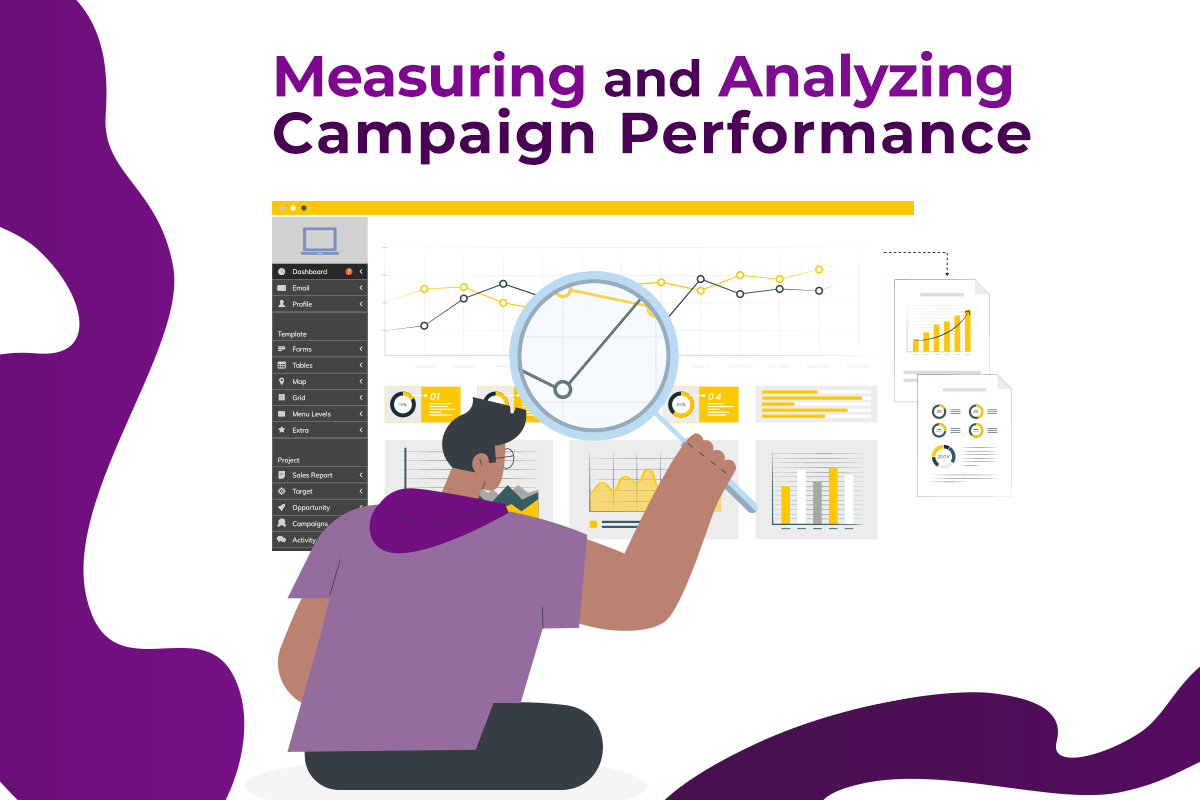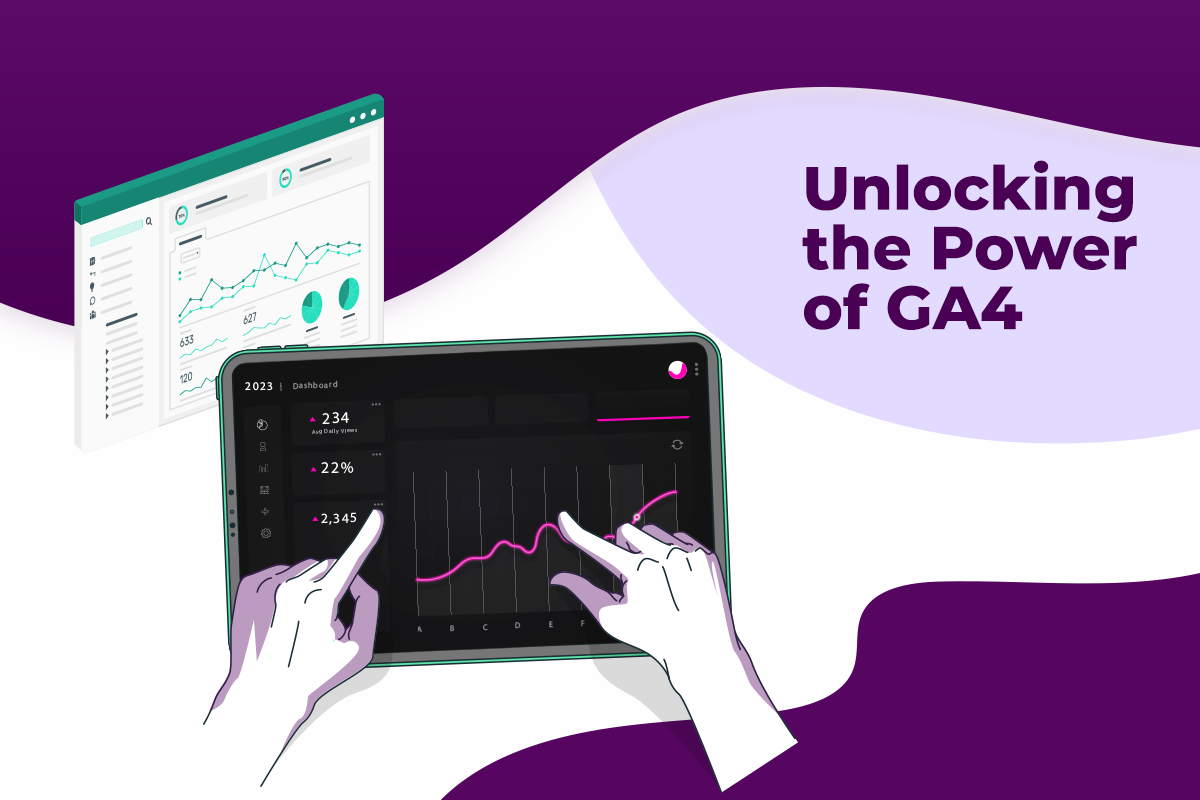When you launch a marketing campaign, it’s natural to be excited about its potential success. You spend hours strategizing, planning, and creating content that you hope will resonate with your audience and drive engagement.
But how do you know if those efforts are paying off? How do you gauge the success of your campaign and the impact it’s having on your business? This is where measuring and analyzing campaign performance come in.
In this blog post, we’ll discuss how to measure campaign performance, why tracking and evaluating your campaigns is crucial, and how insights gained can help you improve your future marketing efforts.
First Step in Measuring Campaign Performance: Identify What Works and What Doesn’t
The first thing to remember is that measuring and analyzing campaign performance helps identify how well your campaigns are doing and what’s causing the most impact on your target audience. Tracking the performance of your campaigns across different channels such as email, social media, and website analytics help know which message resonates most with your audience.
Accordingly, measurement helps to scratch off any marketing technique or creative that doesn’t add value to your efforts. Armed with these data insights on how to measure campaign performance, you can optimize your campaigns to improve performance, giving you more bang for your marketing buck.
Set Goals and Objectives
It’s challenging to achieve anything without a definite goal to aim for. Measuring and analyzing campaign performance highlights areas of your strategy that require improvement and establishes objectives that give insight into what your customers need, which in turn informs your marketing strategy.
Goals are set quarterly or annually, and tracking performance against them helps assess what works and what doesn’t, the right tools, a budget that optimizes customer insights, and a timeline that accounts for market changes.
Gain Valuable Insights into the Business
Measuring your marketing campaign’s performance provides insights into your business that go beyond marketing. By seeing how your customers interact with your campaigns, you’ll better understand your target audience and what they like.
Customer reactions and swings can highlight issues in customer service, technology, or products that need improvements. Analyzing your marketing efforts’ engagement rates allows you to liken your advertising performance to your competitors.
Additionally, insights from what is working in the market help drive innovation and new product features or services.
Measure the Return on Investment (ROI)
Businesses can measure and analyze campaign performance to see what they get back for their marketing efforts. ROI tracking helps determine how many customers were gained in relation to the amount spent on the campaign, whether through sales or customer response.
The insight gained helps businesses to know which campaign is worth repeating, optimize and minimize the cost per acquisition, and maximize revenue.
Keep Up with the Competition
Benchmarking is comparing your business and its performance with your competitors. By tracking your performance in relation to other brands, you can see where they are performing better, how they approach different challenges, and how they react to changes in the market to remain competitive.
These comparisons can be used to inform marketing strategy, improve tactics, and work towards distinguishing your brand in the market.
How to Tell Which Digital Marketing Campaign is Performing Best
To determine which digital marketing campaign is performing best, you can follow these steps:
- Define Key Performance Indicators (KPIs): Identify the metrics that align with your campaign goals and objectives. These could include website traffic, conversion rates, click-through rates, cost per acquisition, or social media engagement.
- Set Up Tracking and Analytics: Implement tracking mechanisms such as Google Analytics or other analytics tools to monitor and measure the performance of your campaigns. Ensure that you have properly set up conversion tracking and goal tracking to capture relevant data.
- Analyze Metrics: Regularly review and analyze the data from your campaigns. Look at the key metrics you defined earlier and compare them across different campaigns. Pay attention to trends, patterns, and significant changes in performance.
- Compare Campaigns: Compare the performance of your various digital marketing campaigns side by side. Look for variations in metrics such as click-through rates, conversion rates, and return on ad spend (ROAS). Identify campaigns that consistently outperform others or exhibit higher engagement and conversions.
- Consider Attribution: Assess how each campaign contributes to the overall customer journey. Determine the touchpoints where your campaigns are most influential in driving conversions. Consider multi-channel attribution models to understand the impact of different marketing channels on the customer’s decision-making process.
- Test and Optimize: Continuously test and optimize your campaigns based on the insights gained from the data analysis. Make data-driven decisions to refine your targeting, messaging, creative elements, and ad placements. A/B testing can also help you identify which variations yield better results.
- ROI Evaluation: Evaluate each campaign’s return on investment (ROI). Calculate the revenue or value derived from each campaign relative to the cost incurred. This assessment will help you determine which campaigns deliver the best ROI and align with your business objectives.
- Monitor Competitors: Keep an eye on your competitors’ campaigns and their performance. Benchmark your campaigns against industry standards and analyze how your competitors are faring in terms of similar metrics. This analysis can provide insights into areas for improvement and help you stay competitive.
By following these steps and consistently monitoring and analyzing the performance of your digital marketing campaigns, you can gain valuable insights into which campaigns are performing best and make informed decisions to optimize your marketing efforts for better results.
Unlock Your Campaign Potential with Advanced Analytics!
Boost your ROI and optimize your marketing efforts. Discover our cutting-edge tools and expertise in measuring and analyzing campaign performance. Let’s take your digital marketing to new heights!
How to Measure Campaign Performance: Key Metrics
When evaluating the performance of a digital marketing campaign, several key metrics can provide valuable insights. These metrics can vary depending on your campaign goals and objectives, but here are some commonly used key metrics for assessing campaign performance:
- Impressions: The number of times your ad or content is displayed to users. Impressions can indicate the reach and visibility of your campaign.
- Click-through Rate (CTR): The percentage of people who click on your ad or content after viewing it. CTR measures the effectiveness of your campaign in generating initial interest and engagement.
- Conversion Rate: The percentage of users who take a desired action, such as purchasing, filling out a form, or subscribing to a newsletter. The conversion rate reflects the effectiveness of your campaign in driving meaningful actions.
- Cost per Click (CPC) measures the cost incurred by advertisers for each click on their ad. It is the amount an advertiser pays to the advertising platform (such as search engines or social media platforms) for each instance a user clicks on their ad. This metric helps advertisers evaluate the efficiency and cost-effectiveness of their campaigns, as it directly relates to the cost of acquiring traffic or visits to their website.
- Cost Per Order (CPO) is another valuable metric calculating the average cost incurred for each confirmed order or conversion generated through an advertising campaign. It helps advertisers evaluate the profitability and efficiency of their marketing efforts by comparing the cost of acquiring a customer to the revenue generated from that customer. A lower CPO indicates that the advertising campaign generates orders more cost-effectively, resulting in higher profitability.
- Cost Per Lead (CPL) measures the average cost of acquiring a qualified lead through an advertising campaign. A lead refers to a potential customer who has expressed interest in a product or service and provided their contact information, such as email or phone number, for further communication. CPL helps advertisers gauge the efficiency of their lead generation efforts and assess the return on investment (ROI) of their marketing campaigns. By tracking CPL, advertisers can identify the most effective lead-generation channels and optimize their marketing strategies to generate higher-quality leads at a lower cost.
- Return on Ad Spend (ROAS): The revenue generated for every dollar spent on advertising. ROAS measures the profitability of your campaign and provides insights into its overall effectiveness.
- Engagement Metrics: Metrics such as likes, shares, comments, and retweets indicate the level of audience engagement with your content. These metrics can help gauge the resonance and impact of your campaign on your target audience.
- Bounce Rate: The percentage of visitors who leave your website or landing page without taking any further action. A high bounce rate may indicate a lack of relevance or alignment between the campaign message and the landing page content.
- Customer Lifetime Value (CLTV): The estimated value of a customer over the entire duration of their relationship with your business. CLTV helps assess your campaign’s long-term impact and profitability by considering the lifetime value of acquired customers.
- Return on Investment (ROI): Your campaign’s profitability and financial impact. ROI considers the revenue generated, costs incurred, and the overall return on your investment in the campaign.
Remember, the choice of key metrics will depend on your specific campaign goals and objectives. It’s essential to align the metrics you track with your desired outcomes to accurately evaluate the success and performance of your digital marketing campaigns.
Tools and Techniques for Measuring Campaign Performance
When measuring the performance of your digital marketing campaigns, various tools and techniques are available to help you gather data and gain insights. Here are some commonly used tools and techniques for measuring campaign performance:
Web Analytics Tools
Platforms like Google Analytics, Adobe Analytics, and Matomo provide comprehensive insights into website traffic, user behavior, conversion tracking, and other important metrics. These tools allow you to track and analyze the performance of your campaigns and website in real time.
Conversion Tracking
Implementing conversion tracking tags or pixels on your website enables you to monitor and measure user actions, such as form submissions, purchases, or downloads. Conversion tracking is what indicates a good-performing digital marketing campaign.
Heatmap and Click Tracking
Heatmap tools, like Hotjar and Crazy Egg, visually represent user interactions on your website. They show where users click, how far they scroll, and which elements attract the most attention. Heatmaps help identify areas of user interest and potential issues on your site.
Social Media Analytics
Social media platforms, such as Facebook Insights, Twitter Analytics, and LinkedIn Analytics, offer built-in analytics tools that provide data on engagement, reach, impressions, and audience demographics. These insights help evaluate the performance and impact of your social media campaigns.
Email Marketing Analytics
Email marketing platforms, such as Mailchimp and Campaign Monitor, provide analytics on open rates, click-through rates, bounce rates, and conversions. These metrics help assess the effectiveness of your email campaigns and optimize future campaigns.
A/B Testing
A/B testing involves creating multiple versions of an ad, landing page, or email and testing them with different segments of your audience. By comparing the performance of these variations, you can identify the most effective elements and optimize your campaigns accordingly.
Call Tracking
Call tracking software allows you to assign unique phone numbers to different campaigns or channels. This helps track and measure the number of calls generated from specific marketing efforts, providing insights into offline conversions and customer interactions.
Surveys and Feedback
Gathering feedback from customers through surveys, polls, or user feedback forms can provide qualitative insights into their experience and satisfaction. Tools like SurveyMonkey or Google Forms can help you collect and analyze this data.
Another good tool to measure and evaluate the impact of digital advertising campaigns on brand perception and consumer behavior is Criteo Brand Lift Survey. This research tool helps advertisers assess the lift or change in key brand metrics resulting from their digital advertising efforts. It provides valuable insights into how ad campaigns influence consumer attitudes, awareness, consideration, purchase intent, and other brand-related factors.
The survey employs a methodology that includes pre- and post-campaign questionnaires, typically administered to a representative sample of the target audience. The respondents are asked a series of questions to gauge their awareness, perception, and preference for the advertised brand before and after exposure to the advertising campaign.
As a result, Brand Lift Survey helps advertisers refine their strategies, allocate budgets more efficiently, and ultimately maximize the return on their advertising investments.
Get Actionable Insights for Data-Driven Success!
Don’t just run campaigns blindly. Leverage our comprehensive measurement and analysis services to gain valuable insights into your campaign performance. Maximize your conversions, identify growth opportunities, and drive success with our data-driven approach.
Performance Dashboards
Creating custom dashboards using tools like Looker Studio or Klipfolio allows you to visualize and monitor key metrics in one place. These dashboards provide a consolidated view of your campaign performance and facilitate easy tracking and reporting.
Custom URL Tracking
Using custom tracking parameters in your campaign URLs (UTM parameters), you can identify the source, medium, campaign name, and other details in your web analytics reports. This helps you understand what indicates a good-performing digital marketing campaign.
All things considered, by leveraging these tools and techniques, you can gather accurate data, measure the performance of your digital marketing campaigns, and make informed decisions to optimize your strategies for better results.
Final Thoughts
Measuring and analyzing campaign performance is a vital task that helps businesses improve their marketing strategy’s effectiveness, drive innovation, and ultimately, increase revenue and customer engagement. It’s easier now more than ever to track performance across multiple channels; it is the responsibility of every business to make use of that data to inform crucial business decisions.
As you plan your next campaign, it’s essential to keep in mind that measuring and analyzing the campaign performance is just as critical as launching the campaign itself. By doing so, you will be better positioned to continually optimize your campaigns’ performance, keeping up with changing market trends and staying ahead of the competition.
Discover the secrets of how MixDigital delivers outstanding results! Enter your best email and view our presentation:







